1999 Choapa Photos I
All images on this page © 1999 by Christina Young.
Welcome to the world of perpetual midnight -- the New Jersey
Mud Hole! The Mud Hole is the deep, silty ocean trench running
from the mouth of the Hudson River to the abyssal dropoff of the
Hudson Canyon, over 80 miles offshore. Being in smack in the
middle of the approaches to New York Harbor and the Port of
Newark, it is filled with shipwrecks from the past 300 years.
Most of these wrecks are difficult dives -- they are deep
(ranging from 150 fsw to 250 fsw), covered with nets and
monofilament, and very dark due to both the usually poor
visibility (most of the time just a few feet) and silty bottom
which absorbs most of the remaining ambient light. For these
reasons, the majority of the wrecks here don't get visited very
often and still have many interesting artifacts.
The Choapa lies in 205 fsw, and is one of the less visited Mud
Hole wrecks. This is because it is a very difficult dive due to
the fishing nets which cover parts of the wreck, extreme amount
of monofilament, and usually poor visibility. Because she is
seldom visited, there are still some very nice artifacts waiting
to be recovered, such as crates of fine wine. :-)
The Choapa was a Chilean freighter rammed in 1944 by the
British tanker Voco. It lies intact in one piece, and is 292 feet
long.
The following pictures (all images from video) are from the
Choapa trip on the dive boat Sea Lion, Sunday, August 22, 1999.
| Out over the Choapa, looking west at Long
Branch, New Jersey. Freighter traffic passes all day
long. |
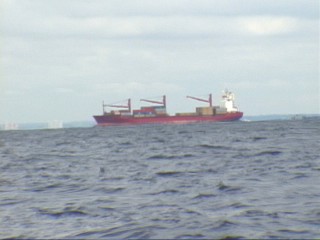 |
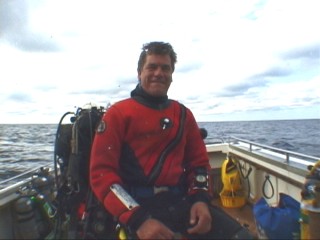 |
Enrique Alvarez waits to get geared up, prior to
tieing into the wreck. |
| Capt. Al Pyatak, with a carrier pigeon he
retrieved off the Choapa. ;-) Actually, sea gulls chase
other birds out to sea, hoping the wear them down and
then eat them. This exhausted pigeon took refuge on the
Sea Lion until we got back to the dock. |
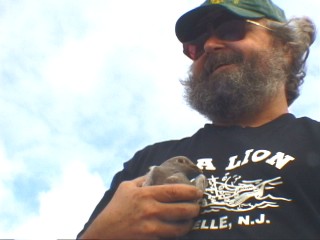 |
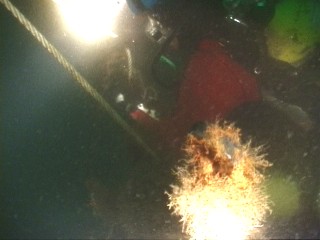 |
Enrique Alvarez ties into the Choapa,
George Hoffman style. George Hoffman pioneered a method
of tieing into a wreck, specifically for the Mud Hole, in
which the diver descends down the anchor line with a
second line, ties this line into the wreck with a piece
of sisle, and then sends the grapnel anchor to the
surface on a lift bag. This way, no one is required to go
and free the hook at the end of the day. The sisle is
simply broken using the force of the boat's engines. |
| This is a ladder on the Choapa. You can
hardly see it because it is covered with anemones and
other sea growth! |
 |
 |
Enrique Alvarez explores the Choapa. |
| It's scenes like this that give the
Choapa its bad name. When you dive this wreck, you must
go in extremely clean and dive with finesse like a
ballerina, because entanglement is a major hazard. |
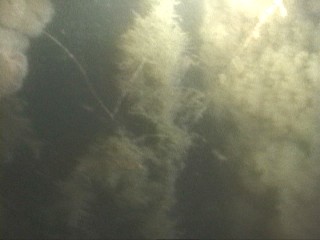 |
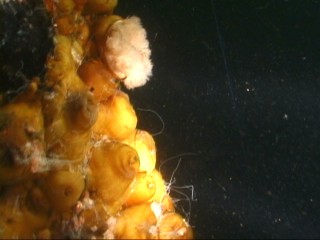 |
The beautiful and colorful anemones of
the Mud Hole. |
| Get out your sword!! |
 |
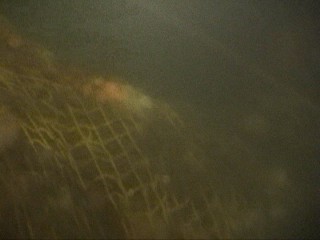 |
This is the fishing net draped over the Choapa's
forward mast. It used to be stretched out over the wreck
like a circus big top, but now it is more decayed, eaten
away, and not really a major hazard anymore. |
| Looking up at the Choapa's picturesque forward mast. |
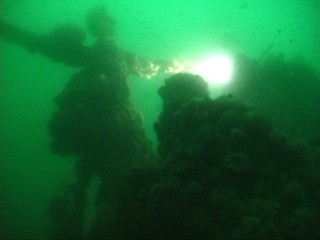 |
 |
Looking up at Enrique Alvarez. Visibility wasn't too
bad for the Mud Hole! |
Go to page 2 of 1999 Choapa photos

Back
to Home | Back to Photos | Back to Scuba Photos | E-mail Me











